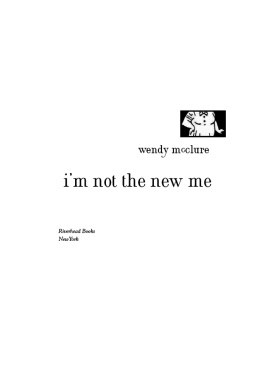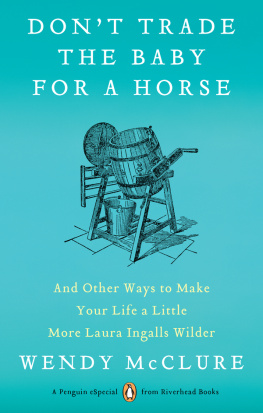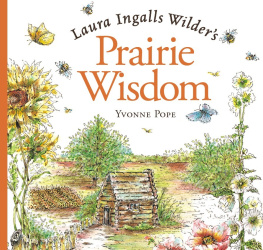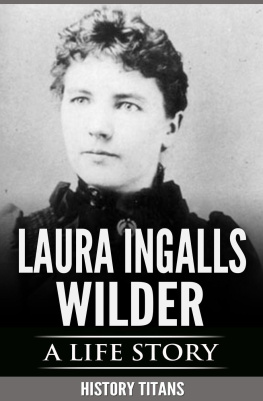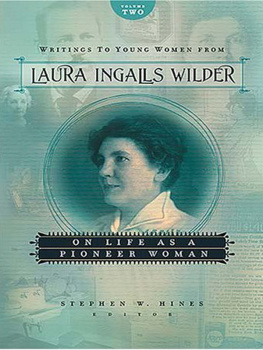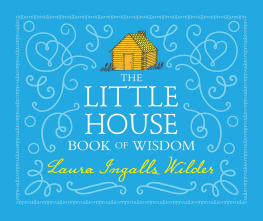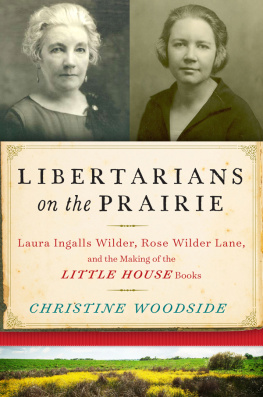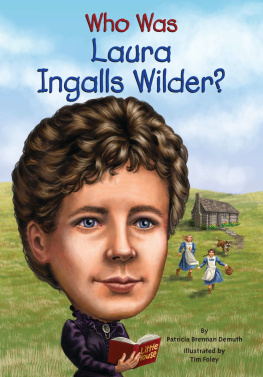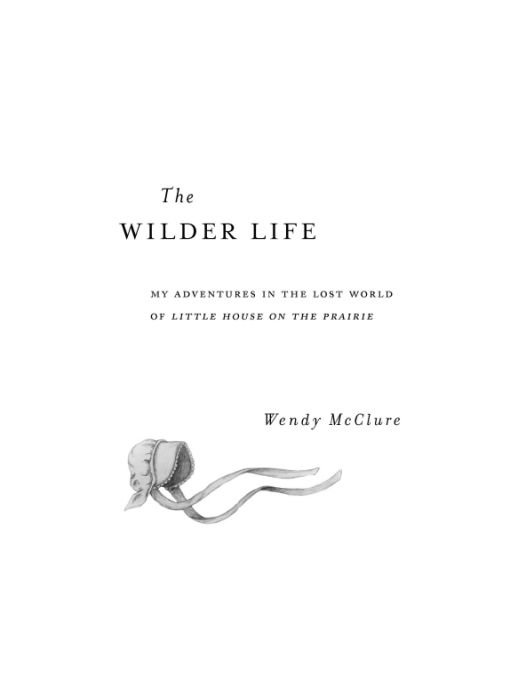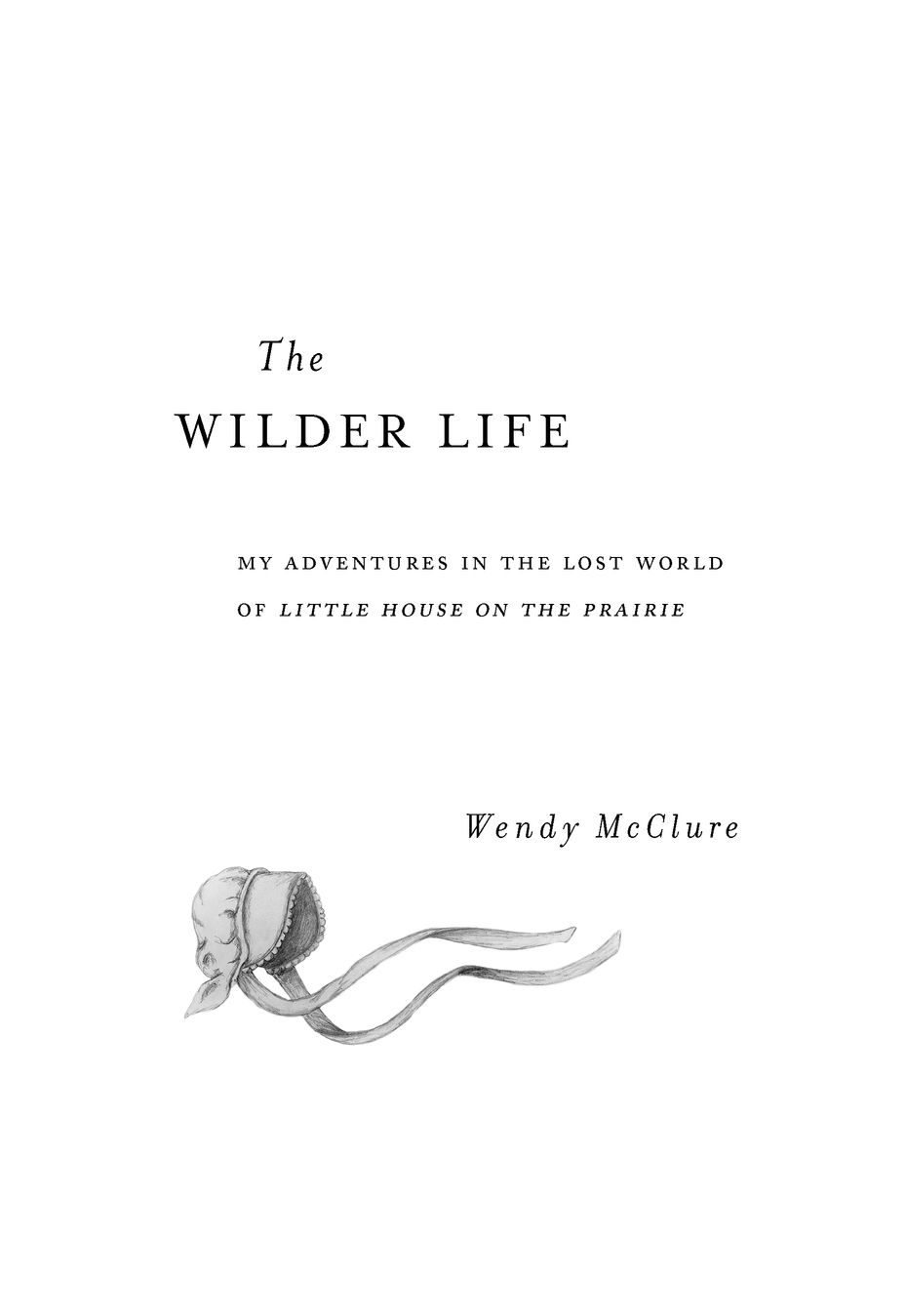Table of Contents
ALSO BY WENDY MC CLURE
Im Not the New Me
The Amazing Mackerel Pudding Plan
RIVERHEAD BOOKS
a member of Penguin Group (USA) Inc.
New York 2011
For Dad, with love.
And for Chris, who read the books.
Our Past Life
I WAS BORN in 1867 in a log cabin in Wisconsin and maybe you were, too. We lived with our family in the Big Woods, and then we all traveled in a covered wagon to Indian Territory, where Pa built us another house, out on high land where the prairie grasses swayed. Right?
We remember the strangest things: the way rabbits and wild hens and snakes raced past the cabin to escape a prairie fire, or else how it felt when the head of a needle slipped through a hole in the thimble and stuck us hard, and we wanted to yell, but we didnt. We moved on to Minnesota, then South Dakota. I swear to God its true: we were a girl named Laura, who lived and grew up and grew old and passed on, and then she became a part of us somehow. She existed fully formed in our heads, her memories swimming around in our brains with our own.
Or thats how it felt to me at least. Thats how it still feels sometimes, if I really think about it. I mean I dont believe in reincarnation, and obviously Laura Ingalls Wilder didnt either, not with her respectable Protestant singing-off-key-in-wooden-churches upbringing. Its just how reading the Little House books was for me as a kid. They gave me the uncanny sense that Id experienced everything she had, that I had nearly drowned in the same flooded creek, endured the grasshopper plague of 1875, and lived through the Hard Winter. Its a classic childhood delusion, I know, and in my typically dippy way I tended to believe that the fantasy was mine alone, that this magical past-life business was between Laura and me and no one else. Surely I was the only one who had this profound mind-meld with her that allowed me to feel her phantom pigtails tugging at my scalp; I had to be the only one who was into the books that much.
This was despite the fact that I was just one of the millions of kids who discovered Wilders books in the 1970s and 80s, not too long after the entire nine-book series was released in paperback in 1971, and around the same time the TV show Little House on the Prairie aired on NBC. Girls in earlier eras would have read the books in hardcover editions, perhaps as gifts from nice relatives who themselves loved the books as children.
(And lets be honest here: if you didnt already know and love the Little House books, they would look and sound an awful lot like something your grandmother would foist upon you as a present, what with their historically edifying qualities and family valuesbasically, the literary equivalent of long underwear. In fact, Im surprised that my grandmother didnt give them to me, though had she done so, they might have gone unread, along with the etiquette guide and the thick, small-print, illustration-free book about the Amish. Thank you, Grandma. Sorry, Grandma.)
Readers of my generation, though, could buy the Little House books cheap through Scholastic Book Clubs, and a great many more found their way to them after watching the TV show. And we were maybe the first generation of readers to be completely out of recollection range for the era these books recordedwe were born so late in the century that even our grandparents had only secondhand knowledge of covered wagons and dresses with bustles. The books were no longer really about anyones good old days anymorenobody I knew, at leastand as a result the world they described, the woods and prairies and big sloughs and little towns, seemed to me almost as self-contained and mystical as Narnia or Oz.
Except even better, because unlike those wholly fictional realms, the Laura World, as Id come to think of it, was a little more permeable. It shared space with the actual past, so things from it could make their way into my world, where I would look for them everywhere. No doubt it helped that countless family restaurants and steak emporiums of my 1970s suburban childhood went for rustic, antique-strewn decorating themes, with knickknack shelves full of tin cups and assorted old-timey crap. It didnt take much more than, say, the sight of a dusty glass oil lamp on the wall above a booth at a suburban Bonanza to make me feel like I was communing with Laura while I ate my cottage fries. Which I preferred to think of as pan-fried potatoes.
Not like I was a dorky kid or anything.
Since I edit childrens books for a living, I get asked a lot about my favorite books as a kid. When I tell people I loved the Little House books, I know its a perfectly respectable answer, the sort of thing folks expect me to say. Then sometimes they go on and ask me whether I also loved various other Important Childrens Books, like Where the Wild Things Are and The Little Prince and The House at Pooh Corner, and Ill do my best for a while, trying to play along, and then at some point I have to hem and haw and shrug because, well, you know what I really liked? I liked books that had pictures of toast in them.
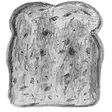
Well, not just toast, but, you know, cups and ladles and baskets and hats, lovingly rendered, all in their places in a room or even just in little vignettes, but at any rate, things, in all their thinginess. I had, and loved, a battered 1960s-era pictionary with wagons and hot dogs and butter dishes floating in plotless arrangements on the page. I pored over the page spreads in Richard Scarrys Book of Something-or-Other, looking at all the little rooms whose contents were meticulously catalogued and the dressed-up raccoons and pigs and squirrels who sat in them, drinking coffee and listening to the radio and eating, yes, toast.
(Though yes, there are those of you who will no doubt point out that, actually, the Little House books have hardly any toast at all, that in fact The Long Winter is the only book in the series in which toast appears, and then only once do the Ingallses get to even butter it before the town gets snowed in and provisions run low, and then the toast is eaten plain or dipped in tea for the next five months and two hundred pages, and the flour that they make the bread from in the first place is ground from seed wheat in the coffee mill with the little iron hopper and the tiny wooden drawer, and after Ma bakes the bread she makes a button lamp, because do you remember the button lamp, in the saucer, with the little square of calico that she twists up and greases into a wick? Shall we go on?)
Toast or no toast, I think Ive made my point here.
The Little House world is at once as familiar as the breakfast table and as remote as the planets in Star Wars. If you had every last log cabin and covered wagon and iron stove needed to conjure this world up, you couldnt, not completely: its a realm that gets much of its power from single thingsthe lone doll, trundle bed, china shepherdess, each one realer than real.


